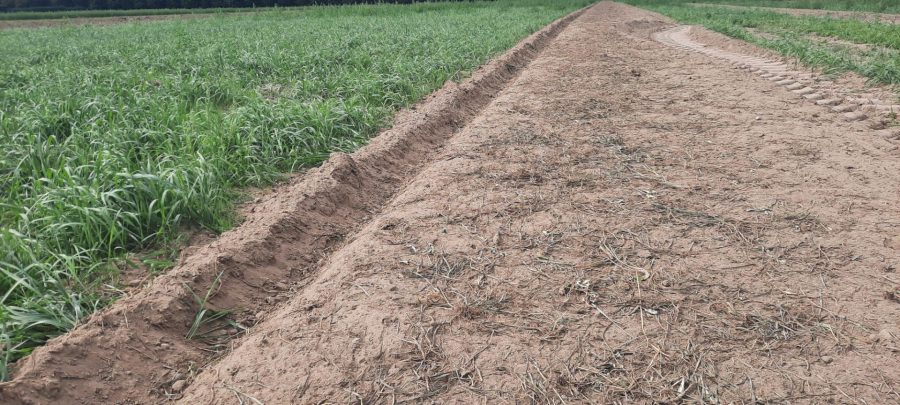General ILVO BLOGS from the Experimental Platform for Agroecology in Hansbeke: A successful way to combat couch grass
The battle against couch grass
In the previous blog post, we passed along the difficulties we had in Hansbeke in mechanically controlling couch grass on grain fields. A story of trial and error. After the failed attempts with the rod weeder in July this year, only August remained to get rid of the couch grass for good. In fact, in September we wanted to sow a temporary, herb-rich grassland (with 3 types of grasses, red clover, white clover, chicory and narrow plantain) to restore the soils after intensive grain cultivation. This grass-herb mixture would not germinate well if the field was full of couch grass.
The Kvick-Finn
Our search for a machine that could quickly remove the couch grass ended with the Kvick-Finn. The machine combats the couch grass in several steps. First, a double row of wing shears cuts the grass roots loose from the ground. Next, a rotor with long awls picks up the clods and hurls them into the air. During that flight, most of the earth is shaken off the clod. The bare grass clods eventually end up on top of the soil, where they dry out and die in sunny weather.
The prongs do this in a much more targeted way than the rod weeder's horizontal rod, which works only at the set depth. The Kvik-Finn's prongs are inserted vertically into the soil, bringing up clumps of grass over the full depth.
In the machines' fixed row paths, the Kvick-Finn does not work as well. The heavy machines compress the soil on those travel paths during mowing and bale wrapping. That compacted soil is lower than the rest of the grassland so the wing shears and prongs of the Kvick-Finn do not perform their operation here as deeply into the soil.

The result of tilling with the Kvick-Finn was very good. The roots of the couch grass were massed to the surface where it will die. We recommend the machine to every farmer who wants to destroy couch grass mechanically. The machine is not yet available at every contractor, though.

Also for tearing up grassland?
The Kvik-Finn worked so well that we used it afterwards to temporarily rip grassland. Because the Kvik-Finn can swing the grass higher than the machine we were doing it with until now, namely Celli's organic tiller, we thought the clods would be shaken loose better and the turf would die better.
The first test showed than this is not true. Although the Kvick Finn can swing small clumps of grass into the air without difficulty, a fully cut turf is too heavy for the Kvick Finn's awls. The result was a torn turf that simply stayed on site. This allows the grass to easily regrow, which of course you don't want when converting a grassland to a field. We will do another operation with a rotary harrow, and maybe even a second pass with the Kvick Finn, before using this plot as a field.